What’s The Perfect Breast Cancer Diet?
It’s the breast cancer diet that doesn’t SUPPORT breast cancer…
Most likely, it’s not what you’ve been led to believe. And cancer couldn’t be happier.
If the actual breast cancer itself could talk, here’s what it might say.
And it will be spoken in a hushed voice or whisper.
Deceptions always are.
Breast cancer wants its host to be deceived and distracted. The two combined render her defenseless.
Breast Cancer ‘Wants’ Fuel and Nourishment
Breast cancer whispers, “Embrace the plants-based / forks-over-knives movement.
…just choose organic, unprocessed foods and you’ll be fine. (wink)”
(I will thrive on any version of carbohydrate. Let the girl think I won’t be fed on her organic, moral carbs.)
Breast Cancer ‘Wants’ Steady Support From Friends
Breast cancer says, “Don’t worry about your waistline.
You’re not that overweight. You’re beautiful. Have a chocolate. Let it go.”
(Let her focus on self-love. I don’t want her to know that her belly fat is my steady support friend.)
Breast Cancer ‘Wants’ To Be Comfortable in a Stress-Less Environment
“Surround yourself with comfort and don’t stress about me.
Nourish yourself regularly. Enjoy your favorite comfort foods, just make them high quality.”
(I don’t want her to know that her healthy grazing keeps me free from hazings. The more steady she eats the more supported I am.)
A cancer cell ‘wants’ what any gal wants, and it isn’t asking for much; some nutrient-rich food, some steady support, some comfort. It all sounds so ‘good’.
Is it?
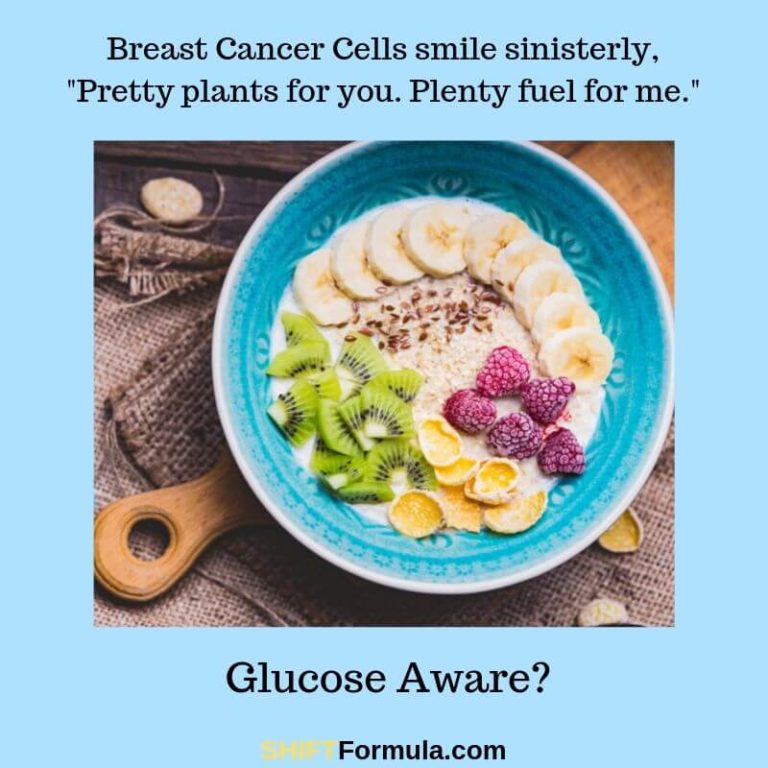
Breast Cancer Nutrition Or Cancer Cell Nourishment?
Hospitals, wellness programs, and advocacy groups tend to follow along with the popular, pleasant, and sometimes referred to as the pretty approach to nutrition. Plant-based, forks-over-knives, organic whole foods theoretically provide the most nutritionally dense and diverse profile. The surface reasoning is that if a body stores up its nutritional arsenal, the better fortified it is for the cancer fight.
A stronger, healthier body is one that is nutritionally sound. Right?
It’s an enticing case but not as solid as it seems.
Cancer is not a disease that develops because of nutritional lack.
Cancer is a metabolic disease supported by nutritional surplus. And by nutrition, in cancer’s case for optimal growth, it can be narrowed down to one primary nutrient.
Glucose.
Pared down to basic principles, food is first and foremost, fuel.
Glucose IS Cancer Cell Fuel
Restrict a cancer cell’s glucose supply and its growth slows dramatically. Cut off a cancer cell’s glucose completely, and the cell barely ceases to function.
That’s powerful information.
Deductive reasoning has us quickly connecting the dots. If glucose is critical to cancer growth, restricting glucose is sound and logical advice.
In order to restrict glucose availability we need to know its source.
Where Does Glucose Come From?
Glucose is created by the body. Our body produces glucose according to fluctuating need.
This is why carbohydrate food is, in science terms, non-essential. We do not need to consume any carbohydrate because our body makes glucose on demand.
Now, I am not recommending restricting carbohydrates from your life.
I am, however, strongly in support of what I call, glucose awareness. Knowing the glucose value of your carbohydrate choices.
Glucose is the fundamental building block of all carbohydrates; sugars which are also known as simple carbohydrate, and starches which are also known as complex carbohydrate.
Simple carbohydrates are called ‘sugars’ because they are individual molecules of glucose. Glucose and sugar are synonymous. Complex carbohydrates, starches, are called complex because they are various formations of chains of individual molecules of glucose.
Simple or complex, every carbohydrate that we eat, breaks down to its basic building blocks which are molecules of glucose. (Read – Are All Carbs Sugar?)
This is the very same glucose that winds up in your bloodstream as blood sugar from where it is distributed throughout the body and is the very same glucose any cancer cells are greedy for.
That might sound a bit defeating. That our body makes the very fuel cancer cells use.
However, cancer cells require a lot of glucose. Cancer cells can require roughly 30 times more glucose than a healthy functioning cell.
That’s good news. Because even if we pull back on consuming glucose a bit, it may be enough to thwart cancer’s growth.
Besides, your body doesn’t need much glucose for optimal functioning. In fact, a healthy bloodstream carries only about 4 grams of glucose. That’s equivalent to about a teaspoon of sugar. Not much at all.
The amount of glucose a body creates naturally is not enough to support cancer growth.
Where Else Does Glucose Come From?
Food.
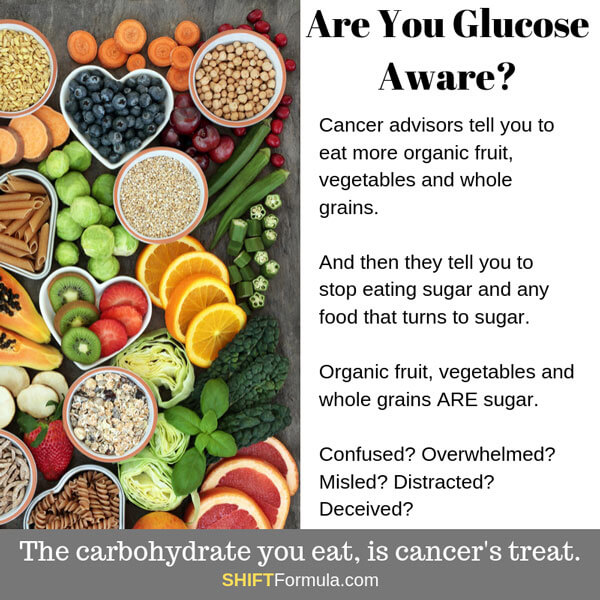
Isn’t it interesting that the food category that is NOT essential to supporting life is the food category we’re advised to eat the most of?
A bit misleading with a measure of “wait….what?”.
Protein and fat, the other two food categories, are both essential. That’s because our body cannot generate all the critical amino acids or fatty acids for supporting life. These essential building blocks and fortification nutrients must be sourced from our diet.
Fat and protein are essential.
Carbohydrate isn’t.
But what about all the colors? What about all the vitamins? What about all the plant-based goodness?
Surely a healthy breast cancer diet should have plenty of those, right?
Cancer is about fueling growth. We need to be about not fueling growth.
Read: Are You Feeding Or Fighting Cancer?
Cancer is about a cell that is behaving out of character and erratically growing without restraint. Fueling these rouge cells, supporting its proliferation is precisely what we don’t want to do.
If carbohydrate is nonessential, and every plant-based food is a glucose food, why are we advised to consume more of it?
Of all the plant foods women with breast cancer are advised to eat, grains carry the greatest glucose load.
A glaring red flag example is Panera Bread’s PINK Ribbon bagel. At 65 grams of blood glucose generating carbohydrate it is the equivalent of 16 teaspoons of sugar. Sixteen! That’s a lot of sugar for just one food item. Every breast cancer non-profit support organization is declaring………………….
Eat. Don’t just buy, but eat the glucose-generating, cancer cell supporting bagels.
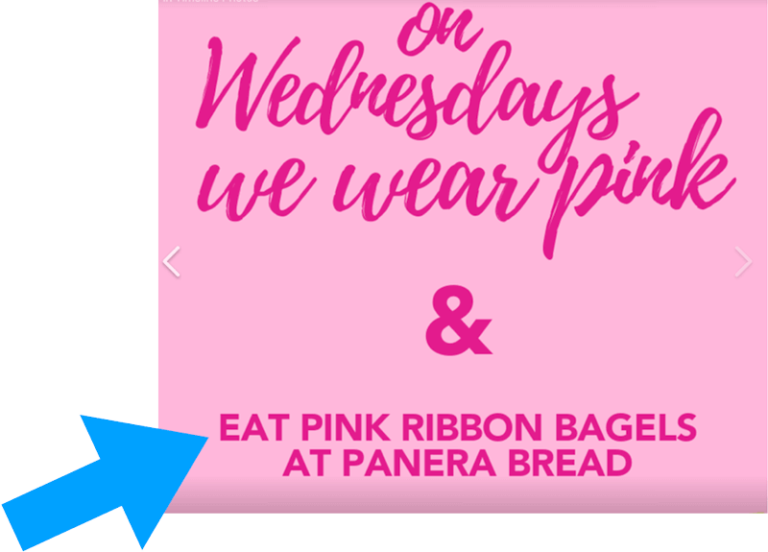
The same holds true for food like rice, quinoa, and oats. One cup serving of quinoa is about 44 grams of glucose.
Next in line in glucose-load descending order fall the fruits and beans.
And finally… the vegetables.
Generally, above-ground growing vegetables carry less glucose than those that grow below ground. Root vegetables and colorful vegetables carry more glucose than green leafy or cruciferous vegetables.
The current plant panacea is problematic if a person battling cancer isn’t glucose-aware. Following the plants protocol of 2-3 servings of organic fruit daily, no limit on farm-to-table vegetables and lots of ‘healthy’ whole grains is a misleading placation. And it amounts to a whole lot of cancer-fueling glucose.
Lastly, it’s important to note that organic in no way cancels out glucose content. Cancer cells don’t discriminate. Cancer cells greedily tap into any version of glucose you provide.
Embracing an organic plant-based diet is embracing an organic glucose-based diet. And cancer cells are grateful.
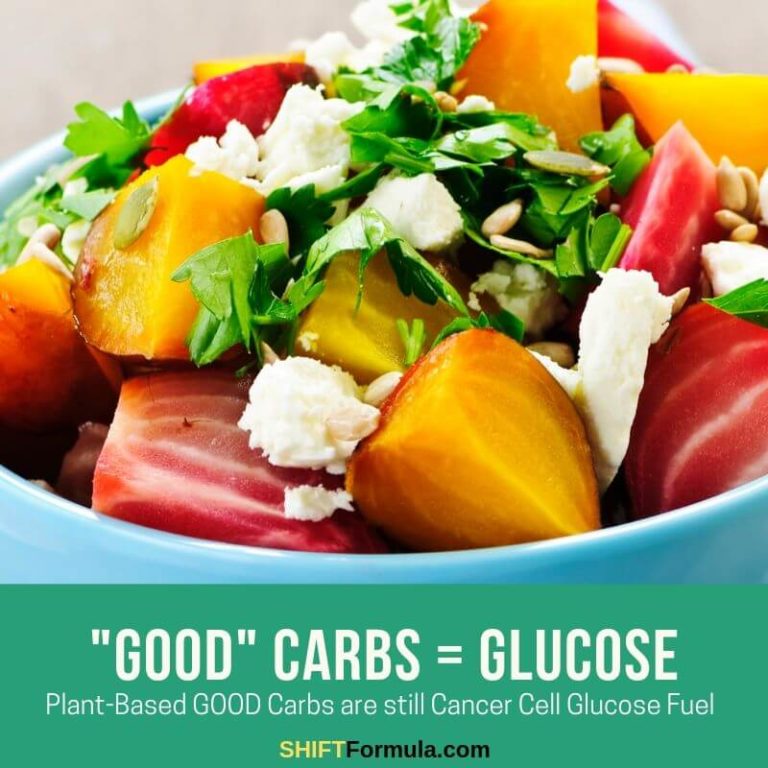
Breast Cancer and Hormones | Steady Support
Along with nourishing foods, cancer cells would also appreciate some steady support. Something to lean on. Something that will ease the growing journey, make the cell stronger and more resilient and more able to proliferate.
If a breast cancer cell is all about out-of-control growth, then any assistance with the whole growing thing is a plus.
Enter the growth specialists, the growth hormones, insulin and estrogen.
Hormones Are Catalysts
Hormones trigger pathways that facilitate specific functions. Insulin is the single primary total – body growth hormone. A purely anabolic hormone, its role is quite defined. Though it’s popularly recognized as the ‘blood sugar lowering’ hormone, that it is intimately involved in growing cancer, growing heart disease and growing brain degeneration is not yet widely known.
That blood sugar ‘lowers’ in insulin’s presence is simply a downstream consequence. Insulin doesn’t cancel out blood sugar. Insulin can’t erase or make blood glucose disappear. What insulin does is signal cells to open, allowing glucose entrance.
Do you find it interesting that cells have a built-in sugar/glucose restriction? That was a pause moment for me. Glucose cannot gain entrance into a cell, to be used for cellular fuel, unless insulin is available to initiate it. When blood sugar gains entrance into cells all over the body, there is naturally, as a consequence, less glucose left in the blood. Thus, blood sugar ‘lowers’. The sugar in the blood went somewhere else in the body.
The Two Types Of Cells Most Sensitive To Insulin…
When it comes to insulin signaling, some cells are more sensitive to insulin than others. Cells that are more sensitive to insulin win the most glucose. Cells that respond swiftly to insulin’s signal get more of the sugar from your blood. The cells most sensitive to insulin are adipose tissue cells around our waist and…..cancer cells. Crikes.
Why would belly area adipose tissue be sensitive to insulin?
Glucose has one function, fuel. All that carbohydrate we eat must be utilized some way, some how, at some time, for fuel.
Sure, our body can burn through some sugar. But the extra, the left-over? That’ll have to be moved into storage. We end up wearing excess blood sugar around our middle.
Waist weight is carbohydrate. Belly fat was our blood sugar. Thanks to insulin, the carbohydrate we ate that was in excess of our body’s energy needs was shuttled into adipose tissue where it converted from glucose into fat. Glucose, blood sugar, is transportable fuel. Fat is simply stored fuel.
Captions for the following images could read, “Girlfriends Supporting Girlfriends Supporting Breast Cancer.” And, “Guy friends supporting guy friends supporting …………?”
How different are these two images, really?
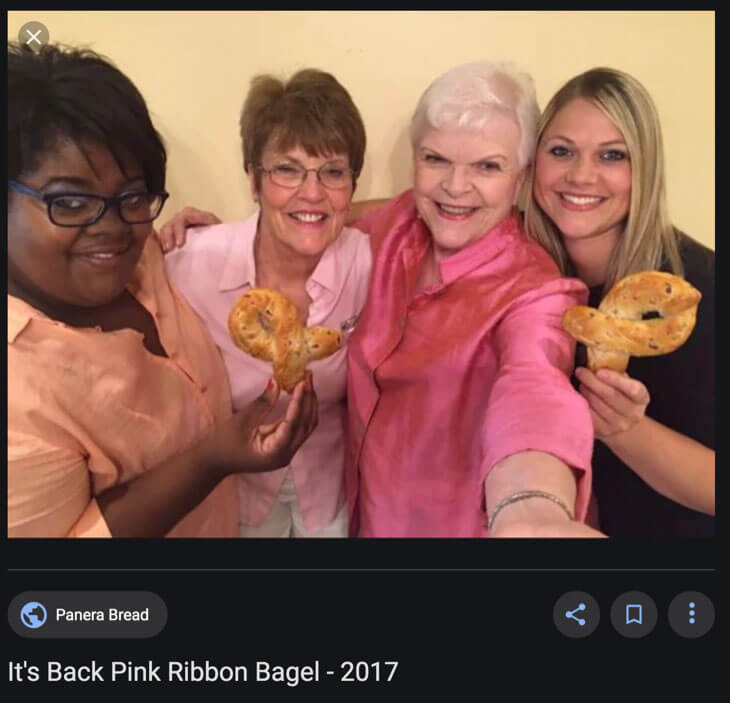

PINK Ribbon Bagels, like lighter fluid to a fire, fuel breast cancer cells with glucose AND generate more belly fat which secretes estrogen which further supports breast cancer growth.
These friends cheer each other on. Which of the two images is more dangerous?
The Waist Weight, Carbohydrate, Cancer Connection
Waist weight, itself, is a source of cancer-driving inflammatory signals along with breast tissue-growth stimulating, estrogen.
Waist weight is the carbohydrate you ate.
Good carbs, bad carbs and every carb in between. Carbohydrate is glucose. Digested carbohydrate, glucose, floods into your bloodstream where it’s called Blood Sugar. This carbohydrate/blood sugar gets distributed to your entire body.
The greediest, neediest cells, (cancer and adipose tissue cells around our waist), grab all the blood sugar they can.
While the cancer-carbohydrate carnival may appear “all good”, a cancer-fighting woman remains vulnerable and immersed in a false sense of security. Rally sisters around her and mass deception is in full tilt. Like the ‘lighter fluid’ guys there’s more interest in the show than in the saving.
How To Support Cancer GROWTH
For every body, insulin shuttles blood sugar into fat tissue around our middle.
The body is a magnificent creature. It makes sense that an upright, mobile being should carry extra fuel at their center of gravity. The transformation of carbohydrate to glucose to fat is nothing more than a conversion of energy.
Glucose is energy.
Fat is energy.
And regarding cancer cells, glucose-feeding cancers are genetically designed to be exquisitely sensitive to insulin. Why?
Because cancer cells require a boatload of glucose.
Ask any breast cancer specialist how they detect a cancer cell. They inject a glucose-based dye with radioactive tracers and observe as it congregates around cancer cells. It shows which cells are utilizing glucose at an accelerated rate. “Feed me.”
This is why I cringe when I see a woman with breast cancer directed to consume a carbohydrate-based diet. Her glucose-sight is blinded by the light of the organic, pretty, nutrient-dense, whole, real halo.
Regardless of the purity of the carbohydrate, it’s still glucose.
About The ‘How To Support Breast Cancer GROWTH’ Graphic
(WARNING… The recommendations in the ‘How To Support Breast Cancer GROWTH” pink awareness graphic in this post are NOT Actual Support Breast Cancer Recommendations. None of these tips are suggested for a breast cancer diet. It’s a made-up version written, hypothetically, by breast cancer itself. “How to Support Breast Cancer” brought to you by Breast Cancer.)
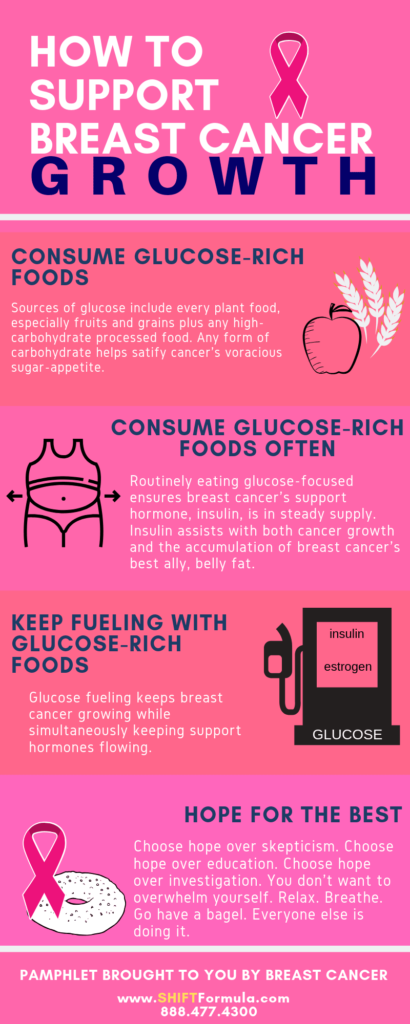
Insulin Plays Another Supporting Role For Cancer
All the carbohydrate/glucose consumption generates blood sugar which keeps insulin overly present.
Every time blood sugar elevates, insulin elevates too. They go together. Always.
Insulin is the primary catalyst for something called cell angiogenesis. Angiogenesis is the creation of new blood vessels for supplying a cancer cell with its critical nutrients. An expanding network for nutrient delivery. Glucose delivery.
Insulin ensures the cancer cell has a strongly established blood glucose delivery system (roots) and that the cancer cell allows glucose entrance every time.
How Insulin and Estrogen Support Breast Cancer GROWTH
Along with insulin’s support, estrogen assists breast cancer growth. And that estrogen comes from an unlikely place. Belly fat.
The belly fat that women (and men) accumulate from the carbohydrate-focused diet churns out estrogen.
This is why waistline measurement coincides with breast cancer risk. In fact, doctors will tell their post-breast cancer patients that if they lose the belly fat they can get off the post-cancer meds.
The belly fat / estrogen production is also why men with round waistlines will share in confidence that they sometimes ‘feel like a woman’. They get emotional. It’s the uptick in estrogen. Man boobs and weepiness are common occurrences that aren’t often spoken about.
Embracing the plant-based protocol will indeed feed cancer and will also ensure that the two power-support hormones, insulin and estrogen, are plentiful and in near-constant supply.
Which leads us to the final cancer comfort variable; No Stress please.
The Perfect Breast Cancer Diet For a Cancer Cell Is COMFORTABLE and STRESS-LESS
Just like us, a cancer cell is quite comfortable with being comfortable.
No unease. No pressure. No stress.
What does that mean for a cancer cell?
We’ve already established that a cancer cell appreciates steady fuel, with surges of surplus fuel every so often plus the ongoing support of hormonal assistance. With these things in place a cancer cell motors along.
But Cancer Does Have a Weakness
Cancer cells are metabolically inflexible. That means they rely primarily on one form of fuel, glucose.
Now, healthy cells also utilize glucose, however, healthy cells, unlike cancer cells, are metabolically flexible. They are quite adept at using alternative fuel when glucose is in short supply. That alternative, clean-burning, long-lasting steady energy fuel is fat and its naturally generated by-product, ketones.
Ketones are generated when the body is burning through fat. Yup. Burn through the damn belly fat and you get powerful energy particles called ketones. Sign me up for some of that!
The Healthy Eater’s Dilemma and a Breast Cancer Woman’s Disadvantage Are One And The Same
It is virtually impossible to burn belly fat when consuming a glucose-focused diet. All that glucose stimulates insulin release and when insulin is in action, body fat burning is shut down.
Hormones are powerful. Fat burning enzymes are not available when glucose is available. This is why even the most conscientious, plant-based eater can be carrying a spare tire of fat around their middle. Their glucose-insulin diet keeps them trapped in fat accumulation mode. Fat release mode only happens when glucose values and insulin secretion are in check.
For those who are glucose and insulin aware, they burn through body fat at will and reap the outrageous benefits of ketones.
Ketones are the energy particles your body creates when it is busy metabolizing fat.
All the cells of your body use ketones, including brain cells! Talk about an uptick in mental, emotional, creative, and productive energy! Burning body fat more and more often also resolves sugar cravings, regulates appetite, calms brain chatter, and compromises cancer.
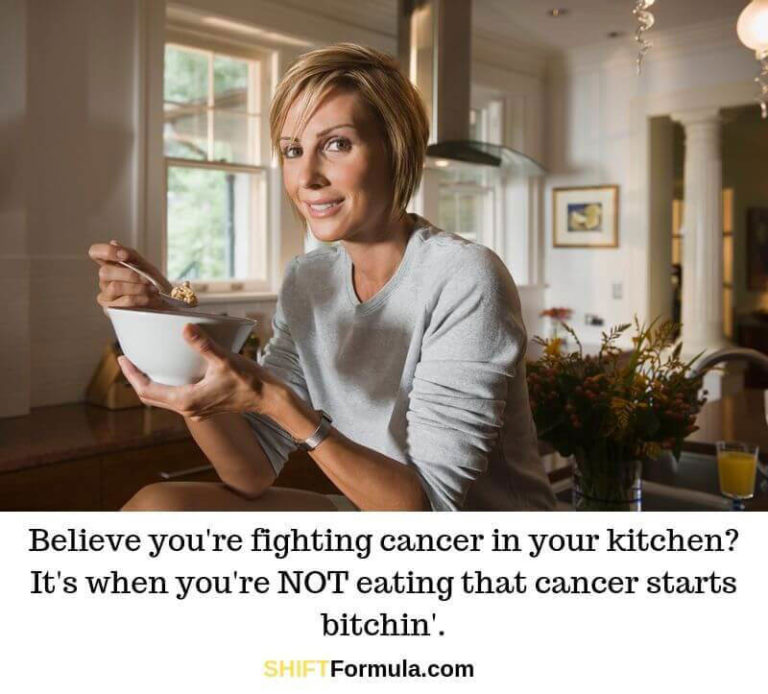
Cancer’s Kryptonite | How Ketones Compromise Cancer
The cells that are metabolically rigid(cancer cells), that don’t serve the well-being of the body(cancer cells), that we desperately wish to rid ourselves of (cancer cells) can’t utilize ketones. That’s cannot. Can. Not.
Cancer Cells Cannot Use Ketones
Talk about exploiting cancer’s weakness.
In fact ketones actually stress cancer cells.
Yes. Instead of delivering organic plant-based carbohydrate glucose to cancer cells, we can actually lose waist weight by burning through our body fat AND at the same time put significant pressure on cancer.
It’s time stress went in the right direction. Instead of cancer putting stress on us, we can put stress on cancer.
Ketones make cancer cry. Healthy cells are empowered by ketones. Cancer cells are weakened by ketones. Healthy cells use ketones for fuel. Cancer cells can’t use ketones for fuel. Not only can cancer NOT use ketones as fuel, but they inhibit the ability of cancer cells to withstand free-radical damage. Ketones can also affect cellular gene expression to suppress cancerous behavior.
In Short, Ketones Compromise a Cancer Cell’s Ability to Survive
You’re not going to find that on the organic plant food buffet table.
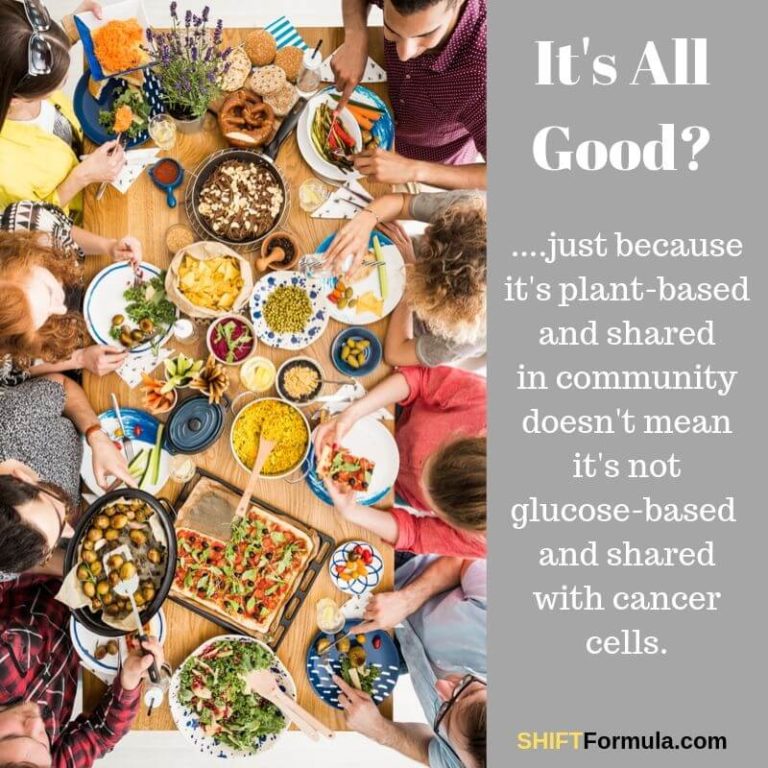
For the best breast cancer diet…
It all comes down to eating in a way that is low-glucose. The low-glucose eating restricts cancer cell fuel AND keeps the cancer-supporting hormone, insulin, low. When insulin is low our body naturally shifts to body fat burning.
No longer churning through glucose, we enjoy the weight loss that comes from churning through body fat.
This means less belly fat to generate breast cancer-stimulating estrogen. This means an uptick in vitality and energy as healthy cells fuel on ketones while cancer cells, which can’t dine on ketones, are left hungry and weak.
This is how to put the stress where it belongs, on the damn cancer itself.
Cancer ‘wants’ to be nourished.
We restrict cancer’s fuel. Quite literally, we starve cancer.
Cancer ‘wants’ to be supported.
We withhold its growth support stimulants. We make sure cancer has no hormone ‘friends’ to rely on.
Cancer ‘wants’ to be stress-free.
We put pressure on cancer, stressing it so it’s defenses weaken.
This is true cancer fighting.
Standing up to cancer involves lots more than t-shirts and Instagram posts. While communities rally and race and dance and chase dollars, the real fight happens through unbiased education, unfunded alliances, and unconventional, kick-ass Right Action.
Breast cancer’s most powerful allies?
Glucose and Insulin.
Your most powerful allies?
Glucose Awareness and Insulin Intelligence.
Know them and win.
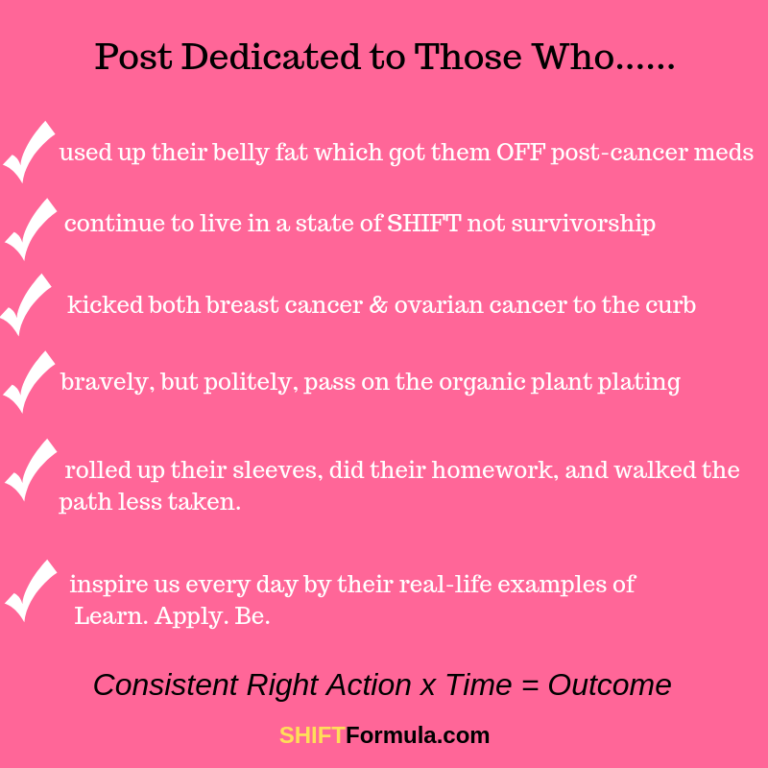
To those who:
- Whittled their waistline and got off the post-cancer meds.
- Kicked both breast and ovarian cancer to the curb.
- Live their SHIFT every day.
- Bravely, but politely, pass on the plant-based buffet.
- By example, are leading others out of the cancer mayhem.
- Resolved their urgent health crisis, not by blindly following the masses, but by rolling up their sleeves, doing the hard thing, and living the solution.
SHIFT
Be the solution.
Barbara McDermott
Here Are A Few Of Our Most Popular Topics…
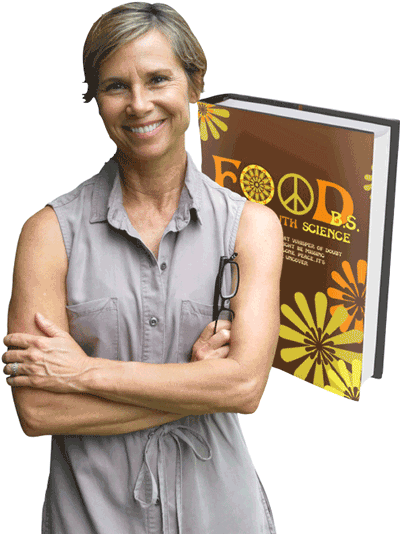
About Barbara McDermott
Regarded as America's #1 Insulin Suppression Coach, Barbara is the co-founder of SHIFT Health & Wellness Solution, and the best-selling author of the groundbreaking book, ‘FOOD B.S.’, With SHIFT, Barbara brings common sense to nutrition, weight loss and health gain. Her refreshing, no nonsense approach to uncovering the truth using non-negotiable rules of science demystifies food and how to defeat chronic disease once and for all.

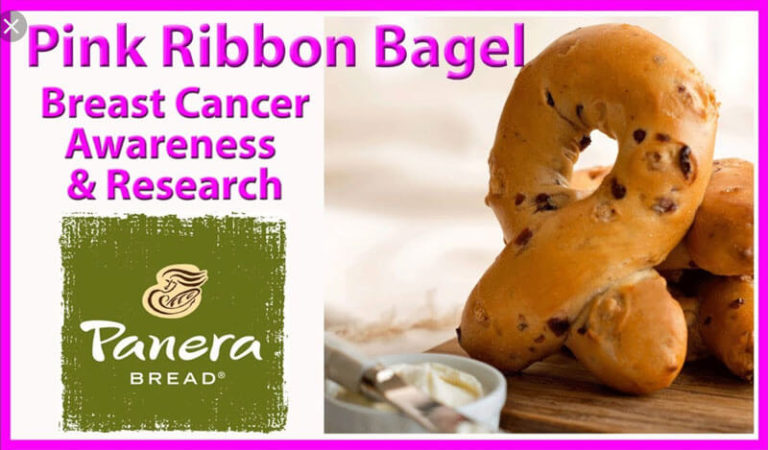
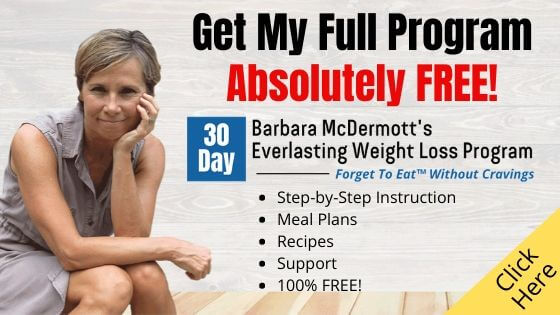
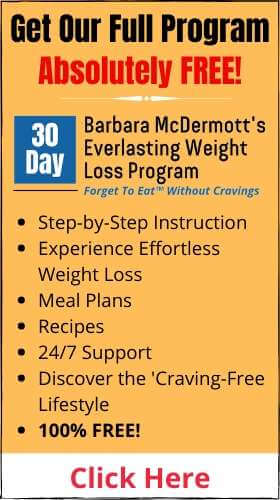
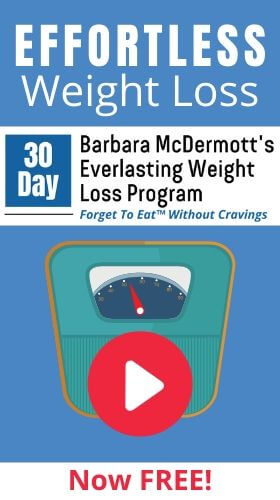
No comments yet.